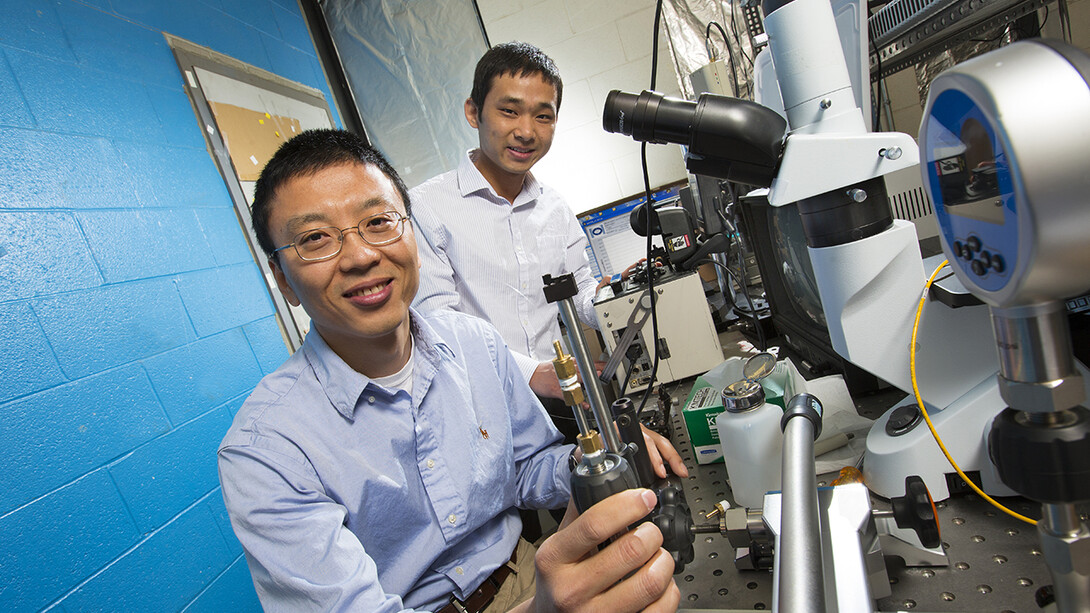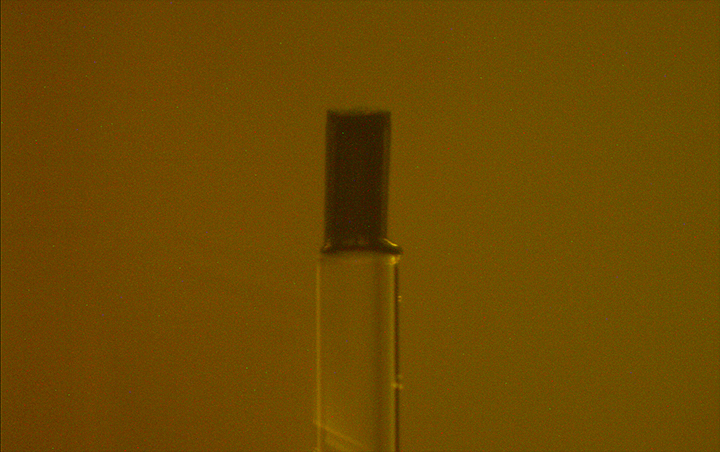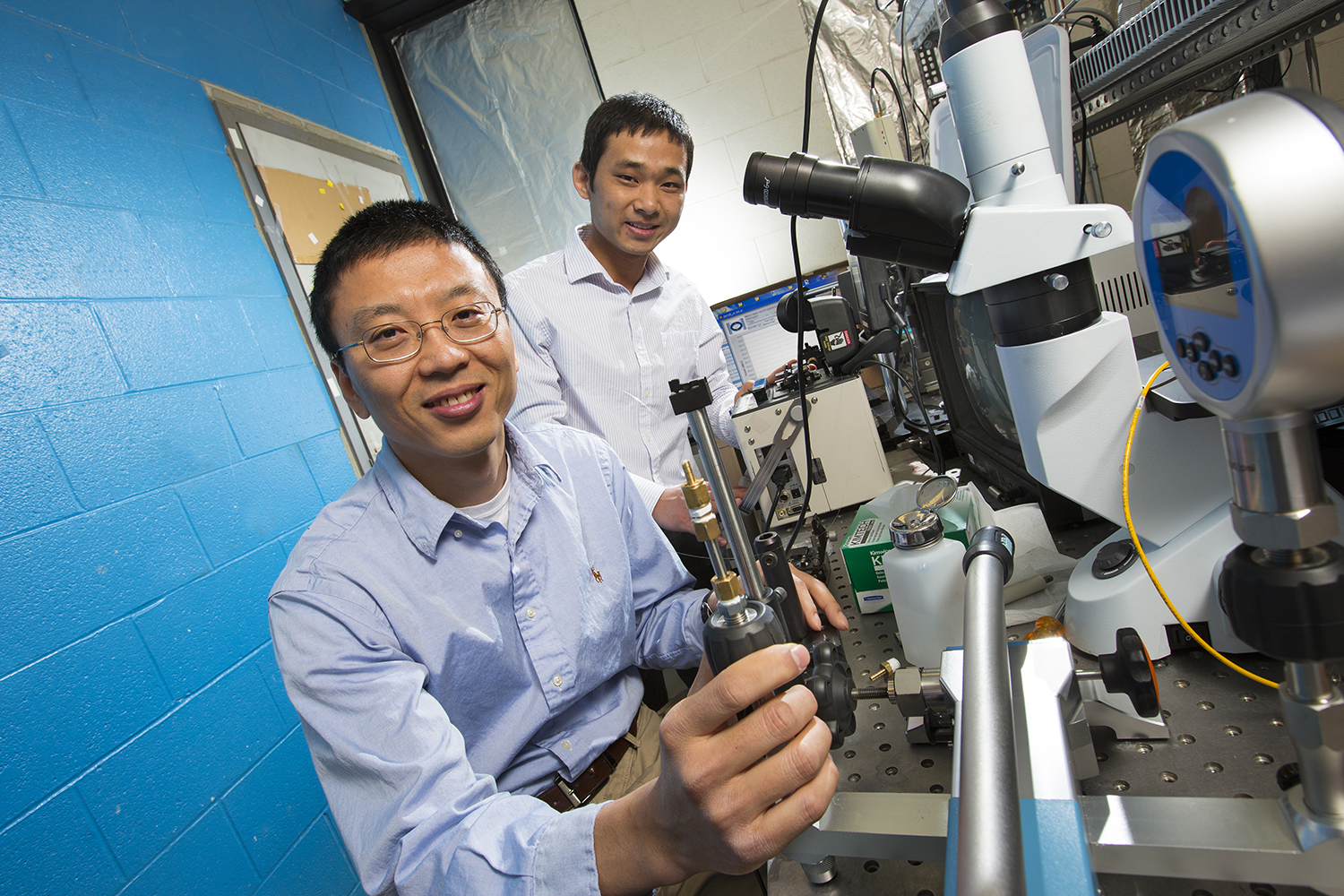
“It’s like a tiny furnace.”
Engineer Ming Han is describing one of his team’s newest feats: a laser-heated, silicon-tipped fiber-optic device that can approach 2,000 degrees Fahrenheit, going from room temperature to 300 degrees in fractions of a second.
And by “tiny,” Han means microscopic – one-tenth of a millimeter in diameter, roughly the thickness of a sheet of paper.
The device’s heating capability could find use in contexts that range from monitoring greenhouse gases to prepping specimens for biological research to producing micro-bubbles for medical or industrial applications. It also acts as a thermometer whose performance at extreme heat would allow it to monitor temperature in the demanding environments of engines and power plants, Han said.
“We have an elegant sensor structure with a very efficient heating mechanism,” said Han, associate professor of electrical and computer engineering. “In other devices, the heating element and the temperature-sensing element are generally two different elements. Here, we’ve integrated both into the same tiny structure.”

The design evolved from Han’s prior work on a fiber-optic temperature sensor suitable for oceanography. Like the new design, that sensor featured a microscopic silicon pillar attached to the end of fiber-optics – flexible glass strands that transmit light signals at extreme speeds. But the glue that bonded the silicon and fiber-optics would soften at roughly 200 degrees Fahrenheit, restricting its use at higher temperatures.
“Then we had a breakthrough,” Han said.
After again bonding the fiber-optic and silicon pillar with glue, the team used an extremely hot arc of electric current – essentially a sustained bolt of lightning – to fuse another fiber-optic strand with the opposite side of the pillar. The process simultaneously softened the glue on the other side and detached the original fiber-optic strand, leaving just the newly fused device.
From there, Han’s team fed two wavelengths of light through the fiber-optic – one a 980-nanometer laser that gets absorbed by the silicon, the other a 1550-nanometer wavelength that passes through it.
Because the absorbed laser produces heat, its remote-controlled power dictates the temperature of the device. Meanwhile, the broader wavelengths that enter the silicon get partially reflected by the two ends of the pillar and begin interfering with one another. Those interference patterns change with the silicon’s temperature, making their readouts a precise and responsive thermometer.
Han and co-designer Guigen Liu, a postdoctoral researcher in electrical and computer engineering, said the device’s ability to generate a broad swath of wavelengths in the near- to far-infrared range could prove especially useful in detecting gases based on how they interact with those waves. And the ability to gauge and adjust its temperature, Han said, lends the device a functional versatility unmatched by existing micro-heaters.
“We still have a lot of work to do to make it better,” he said. “But this is a very promising technology that has a lot of exciting applications.”
The team detailed its new device in the journal Optics Letters. Han and Liu authored the study with Qiwen Sheng, doctoral student in electrical and computer engineering; Dustin Dam, systems integration engineer in biological systems engineering; Jiong Hua, research specialist with the Nebraska Center for Materials and Nanoscience; and Weilin “Will” Hou, an oceanographer with the U.S. Naval Research Laboratory.
The researchers received support from the U.S. Naval Research Laboratory, the Office of Naval Research, the National Science Foundation and the Nebraska Research Initiative.








